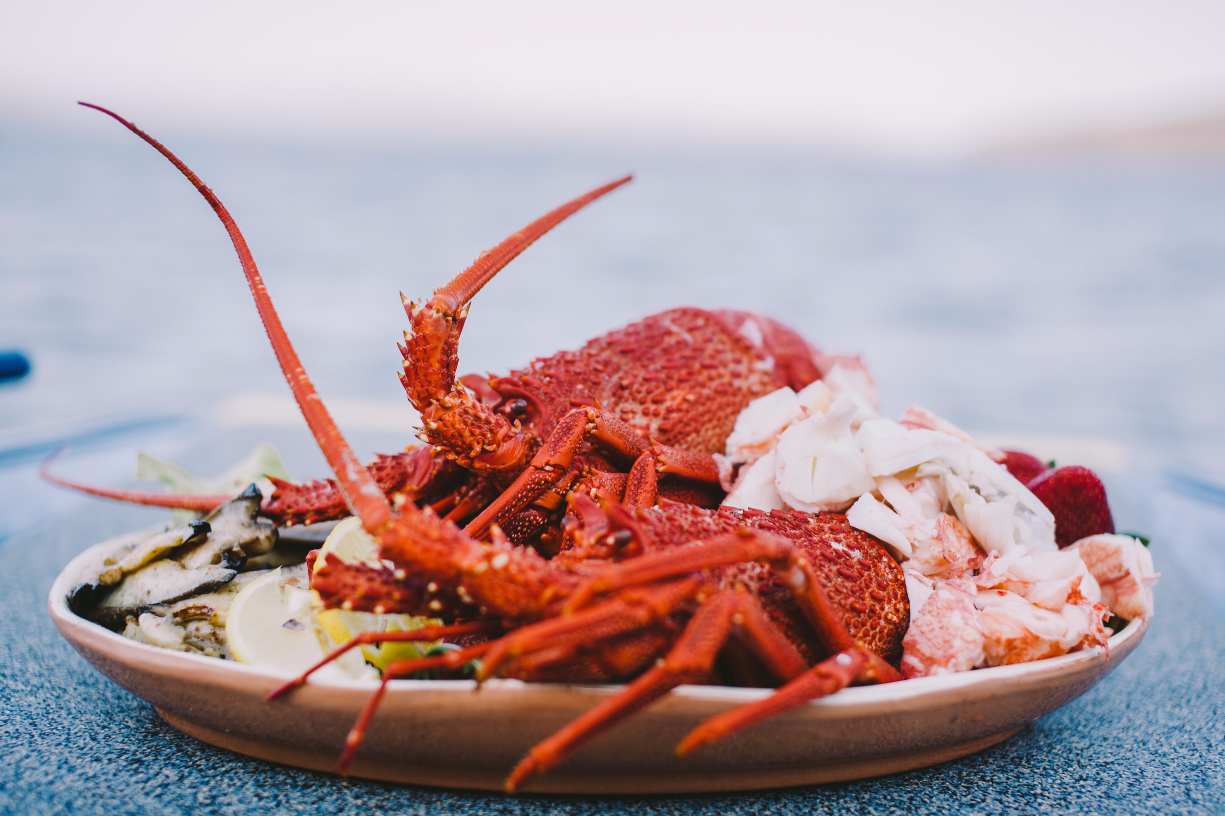Shark diving in Australia is one of the world’s most thrilling and unforgettable marine adventures. From the legendary great whites off the coast of South Australia to the gentle whale sharks of Ningaloo Reef, this experience offers a rare chance to encounter the ocean’s most magnificent predators in their natural habitat. Australia’s extensive coastline, pristine waters, and rich biodiversity make it a top destination for adrenaline-seeking divers and wildlife enthusiasts alike. Whether you’re descending into a steel cage beside the Neptune Islands with Calypso Star Charters or swimming freely among reef sharks in Queensland with Mike Ball Dive Expeditions, every dive offers a heart-pounding and awe-inspiring encounter with nature.
For many, shark diving isn’t just about the thrill—it’s about connecting with the marine world in a deeply personal and transformative way. Sites like Rodney Fox Shark Expeditions offer guided experiences led by marine biologists, combining education with excitement. The diversity of shark species in Australian waters—ranging from tiger sharks and hammerheads to endangered grey nurse sharks—is unmatched. If you’re hoping to glide alongside the world’s largest fish, plan your trip to Ningaloo Reef between March and August, when whale sharks gather in vast numbers during their seasonal migration. Operators like Ningaloo Discovery offer eco-certified tours that bring you face-to-face with these gentle giants.
Safety and conservation are at the heart of Australia’s shark diving industry. All operators are strictly regulated by bodies like the Australian Maritime Safety Authority and adhere to guidelines set by the Great Barrier Reef Marine Park Authority. These regulations ensure not only the safety of participants but also the protection of shark populations and the surrounding ecosystems. Ethical shark diving in Australia emphasizes observation over interference—many tours contribute directly to conservation efforts through citizen science and marine research. Organizations like Eco Tourism Australia certify responsible operators that prioritize the well-being of marine life.
For first-time divers, there are plenty of options that don’t require scuba certification. Cage diving, for example, allows participants to stay close to the surface using hookah-style air hoses while viewing great whites through reinforced steel enclosures. For those ready to venture deeper, liveaboard dive trips to remote locations like Osprey Reef offer encounters with silvertips, grey reef sharks, and hammerheads in crystal-clear waters. These expeditions, offered by professionals like Pro Dive Cairns, provide both comfort and expertise, making even the most remote reefs accessible and safe.
In a world where sharks are often misunderstood, shark diving in Australia helps shift the narrative—from fear to fascination, from danger to respect. It opens the door to an unforgettable experience where humans become humble visitors in the sharks’ realm. With responsible tourism, education, and conservation at its core, this activity is more than an adventure—it’s a contribution to the protection of one of the ocean’s most vital species.
### The Thrill of Shark Diving Down Under
Shark diving in Australia is one of the most exhilarating adventures for thrill-seekers and nature lovers alike. With crystal-clear waters and a diverse marine ecosystem, Australia offers unparalleled opportunities to come face-to-face with some of the ocean’s most formidable predators. Whether you’re cage diving with great whites or free diving among reef sharks, this adrenaline-pumping activity is an unforgettable experience.
The adrenaline rush of cage diving
Cage diving with great white sharks is a popular activity off the coast of Port Lincoln in South Australia. Operators like Calypso Star Charters and Rodney Fox Shark Expeditions offer safe and professionally guided cage dives. Divers are lowered into the water in steel cages where great whites—often measuring over 5 meters long—can be observed up close. According to the South Australian Tourism Commission, more than 10,000 tourists engage in cage diving here each year.
The unique marine biodiversity
Australia’s waters host over 170 species of sharks, making it one of the most shark-rich regions in the world. From whale sharks in Ningaloo Reef to grey nurse sharks in Byron Bay, the variety of shark species makes every dive different. Shark diving in Australia is not just about adrenaline; it’s a journey through one of the most biologically diverse marine environments on the planet.
Popular diving regions across the coast
Shark diving hotspots include Neptune Islands in South Australia, Ningaloo Reef in Western Australia, and Osprey Reef in Queensland. These regions offer visibility of up to 30 meters and water temperatures ranging from 20°C to 28°C, ideal conditions for underwater exploration. Port Lincoln alone sees over 20 licensed shark diving tours annually, contributing significantly to local tourism.
The role of professional guides
Diving operations are strictly regulated and typically led by experienced marine biologists and dive masters. These professionals ensure safety and enhance the experience by educating divers about shark behavior, biology, and conservation. All operators must comply with the Australian Maritime Safety Authority’s guidelines, ensuring that shark diving in Australia remains a safe and educational activity.
Why thrill-seekers are drawn to sharks
According to a 2022 study by Tourism Research Australia, 72% of participants in adventure tourism cite shark diving as one of the most exciting and memorable experiences of their travels. The combination of awe, fear, and fascination with sharks creates a unique psychological appeal that keeps divers coming back for more. Shark diving in Australia continues to rise in popularity, attracting both seasoned divers and curious first-timers.
### Top Shark Diving Spots in Australia
Australia’s vast coastline offers some of the best shark diving experiences in the world. From tropical coral reefs to deep offshore waters, there are numerous locations where divers can encounter a variety of shark species in their natural habitats.
Neptune Islands, South Australia
This is the most famous location for cage diving with great white sharks. Located about 70 kilometers from Port Lincoln, the islands are a breeding ground for seals, which attract large populations of great whites. Over 15,000 tourists visited the Neptune Islands for shark diving in 2023 alone, according to the South Australian Department for Environment and Water.
Ningaloo Reef, Western Australia
Ningaloo Reef is known for its seasonal whale shark gatherings. These gentle giants can reach lengths of 12 meters and are present between March and August. Operators in Exmouth report an average 95% success rate in spotting whale sharks during peak season. The reef itself is part of a UNESCO World Heritage Site, enhancing its ecological and touristic value.
Osprey Reef, Queensland
Located in the Coral Sea, Osprey Reef is a remote diving destination known for its dramatic underwater cliffs and large pelagic sharks, including hammerheads and silvertips. Liveaboard dive tours often include shark feeding dives, offering close encounters in clear waters with visibility up to 40 meters. In 2022, Osprey Reef received over 3,000 dive tourists, primarily from Europe and North America.
Julian Rocks, New South Wales
Near Byron Bay, Julian Rocks is a marine sanctuary that hosts grey nurse sharks, particularly between May and October. Grey nurse sharks are critically endangered, and divers here can contribute to citizen science projects by photographing and identifying individuals. Annual monitoring shows over 400 distinct grey nurse sharks frequenting the area.
Fish Rock Cave, New South Wales
This site near South West Rocks is one of the only known places where divers can see grey nurse sharks inside a submerged cave. The cave stretches over 120 meters and offers a unique, cathedral-like experience. A 2021 survey recorded over 1,500 dives at Fish Rock Cave, with shark sightings on over 80% of them. Shark diving in Australia is made truly special by such unique spots.
### Meet the Sharks: Species You Might Encounter
Australia’s marine territory is home to an astonishing range of shark species. These magnificent creatures vary in size, behavior, and habitat, offering divers diverse and memorable encounters.
Great white sharks
These apex predators are mainly spotted near South Australia’s Neptune Islands. Great whites can weigh up to 1,100 kilograms and measure over 6 meters long. Despite their fearsome reputation, attacks on humans are rare, with only 57 recorded fatal shark attacks in Australia since 1791, according to the Australian Shark Attack File. Shark diving in Australia often involves observing these majestic animals from the safety of underwater cages.
Whale sharks
The largest fish in the world, whale sharks are filter feeders and pose no threat to humans. They are most commonly found in Ningaloo Reef between March and August. These giants can grow up to 12 meters and weigh more than 20 tons. Tagging studies in 2022 revealed that over 300 individual whale sharks migrate to Ningaloo annually, offering excellent diving opportunities.
Grey nurse sharks
These slow-moving, docile sharks inhabit the east coast, especially around Byron Bay and South West Rocks. Once feared and hunted, they are now a protected species in Australia. Estimated population numbers are under 2,000 individuals along the east coast, emphasizing the importance of conservation and responsible diving.
Tiger sharks
Common in Queensland and northern Australia, tiger sharks can grow up to 5 meters and are known for their curious nature. While they are one of the “big three” in terms of shark attacks, actual incidents are rare. Shark diving in Australia sometimes includes supervised encounters with tiger sharks, especially in remote areas like Coral Bay.
Hammerhead sharks
These uniquely shaped sharks are found off the coasts of northern Queensland and Western Australia. The scalloped hammerhead is the most common species encountered by divers. According to a 2023 study by CSIRO, these sharks are especially vulnerable to overfishing, and divers play a key role in monitoring their numbers through tagging and photography programs.
### Is Shark Diving Safe? What You Need to Know
One of the most common concerns among prospective divers is whether shark diving in Australia is safe. The answer, supported by both statistics and industry standards, is a resounding yes—provided the activity is conducted through certified operators.
Strict regulations and licensing
The shark diving industry in Australia is heavily regulated. Operators must be licensed under the relevant state marine parks and wildlife protection laws. For instance, in South Australia, only two companies are permitted to run great white shark tours, and they are required to follow stringent protocols regarding baiting, distance from the sharks, and diver safety.
Professional supervision at all times
All dives are supervised by qualified dive masters or marine biologists. These professionals are trained to manage emergencies, interpret shark behavior, and maintain diver safety. According to WorkSafe Victoria, there have been zero fatalities linked to professionally operated shark dives in Australia over the past 20 years.
Use of reinforced cages and equipment
Cage diving involves the use of 12mm reinforced steel cages, which are regularly inspected and maintained. Divers are provided with high-quality wetsuits, weight belts, and full-face masks or snorkels. Shark diving in Australia relies on top-notch gear, often meeting or exceeding international diving safety standards.
Medical and emergency protocols
Operators are required to have oxygen kits, defibrillators, and first aid trained staff on board. Evacuation procedures are in place, and vessels are equipped with GPS, radios, and emergency beacons. In 2021, the Australian Maritime Safety Authority conducted 237 inspections on diving vessels, ensuring full compliance with safety protocols.
Risk perception vs reality
Despite media portrayals, shark attacks are exceedingly rare. According to the International Shark Attack File, Australia averaged only 1.38 fatal shark attacks per year from 2010 to 2020. When diving through licensed operators, the risk is statistically negligible. Shark diving in Australia remains one of the safest and most thrilling wildlife interactions available to tourists.
Best Time of Year for Shark Diving Adventures
Shark diving in Australia is a year-round activity, but the type of experience and species you’ll encounter can vary significantly depending on the season and location. Understanding the best times to visit different shark diving destinations helps you plan the ultimate underwater adventure.
Great white shark season in South Australia
The best time to see great white sharks around Neptune Islands is from May to October, when shark activity peaks due to cooler water temperatures and increased seal movement. Visibility is also better during this time, often exceeding 20 meters. Cage diving tours are more frequent, and sightings are more reliable in these months.
Whale sharks in Western Australia
If swimming with whale sharks is on your bucket list, plan your trip to Ningaloo Reef between March and August. This period coincides with the annual coral spawning and plankton blooms, attracting hundreds of these gentle filter feeders. Exmouth dive operators report a 95% success rate during these peak months.
Grey nurse sharks on the east coast
The best time to see grey nurse sharks in New South Wales, especially around Byron Bay and South West Rocks, is between May and October. During these cooler months, the sharks congregate in known aggregation sites, making them easier to observe. These months also offer calm conditions and high underwater visibility.
Summer dives in the Coral Sea
For warm-water diving and encounters with tiger sharks, silvertips, and hammerheads, head to Osprey Reef or Coral Bay during December to February. The Coral Sea remains warm and calm, with exceptional visibility. While it’s the wet season in northern Australia, the reef areas remain accessible via liveaboards.
Special events and tours
Several operators organize special shark-focused expeditions during peak seasons. These may include tagging programs, citizen science dives, or photography workshops. Booking well in advance is recommended, especially during school holidays or international tourist seasons like Christmas and Easter.
Preparing for Your First Dive: Tips and Gear
If you’re new to shark diving, preparing mentally and physically will greatly enhance your experience. From the right mindset to the right gear, here’s what first-timers need to know before diving into the deep.
No certification? No problem
Most cage diving tours in Australia don’t require scuba certification, as divers stay close to the surface with air hoses or snorkels. However, for open-water or reef diving (especially at sites like Osprey Reef), an Open Water Diver certification is typically required. Some liveaboards offer PADI courses during the trip.
Mental preparation and confidence
Staying calm is key. Sharks are curious but cautious animals and do not see humans as prey. Learn about shark behavior before the dive to reduce fear. Breathing slowly and focusing on the experience helps reduce anxiety. Many divers describe a sense of awe rather than fear when they first see a shark in the wild.
Essential gear checklist
While most operators provide gear, here’s what to expect and optionally bring:
Wetsuit (5mm to 7mm depending on location)
Full-face snorkel mask or dive mask
Fins and booties
Weight belt (provided)
Underwater camera (GoPro with red filter is ideal)
All equipment provided by tour companies is regularly maintained and sanitized, but bringing your own mask can improve comfort and fit.
Physical fitness and health
You don’t need to be an athlete to go shark diving, but basic swimming skills and a moderate level of fitness are helpful. Avoid alcohol the night before, stay hydrated, and get a good night’s rest. If you’re prone to seasickness, take medication an hour before departure.
Safety briefings and etiquette
Every tour begins with a comprehensive safety briefing. Listen carefully and follow crew instructions. Avoid sudden movements, respect marine life, and keep your limbs inside the cage at all times. Shark diving in Australia follows eco-tourism guidelines, which emphasize non-intrusive observation.
Shark Conservation and Ethical Diving Practices
While shark diving is thrilling, it also plays an important role in raising awareness about shark conservation. Ethical tourism can directly contribute to protecting shark populations, many of which are threatened by overfishing, habitat loss, and pollution.
The plight of sharks worldwide
According to the IUCN, over 30% of shark species are threatened with extinction. Australia, with its strong conservation laws, plays a vital role in protecting these apex predators. Species like the grey nurse shark and scalloped hammerhead are protected under Australian law.
Eco-certified dive operators
Look for operators with EcoTourism Australia certification. These businesses commit to sustainable practices like non-invasive observation, regulated baiting (if any), and active participation in research and tagging projects. Your choice of operator can influence how sharks are treated and protected.
Citizen science opportunities
Many shark diving tours invite divers to participate in photographic identification, tagging, or data logging programs. These activities contribute to shark population monitoring and help scientists track migration patterns. In 2023, over 1,200 divers contributed to citizen science programs across Australia.
Avoiding harmful practices
Ethical operators never feed sharks by hand, use excessive bait, or encourage touching. These actions alter shark behavior and create long-term risks. Always choose tours that prioritize the well-being of marine life over spectacle. Shark diving in Australia must be a model of responsible eco-tourism.
Raising awareness and advocacy
After your dive, consider sharing your experience to educate others. Whether through blogs, social media, or conversations, positive shark stories help dispel myths and shift public perception. By diving responsibly, you’re not only enjoying the adventure—you’re helping protect the future of sharks.




